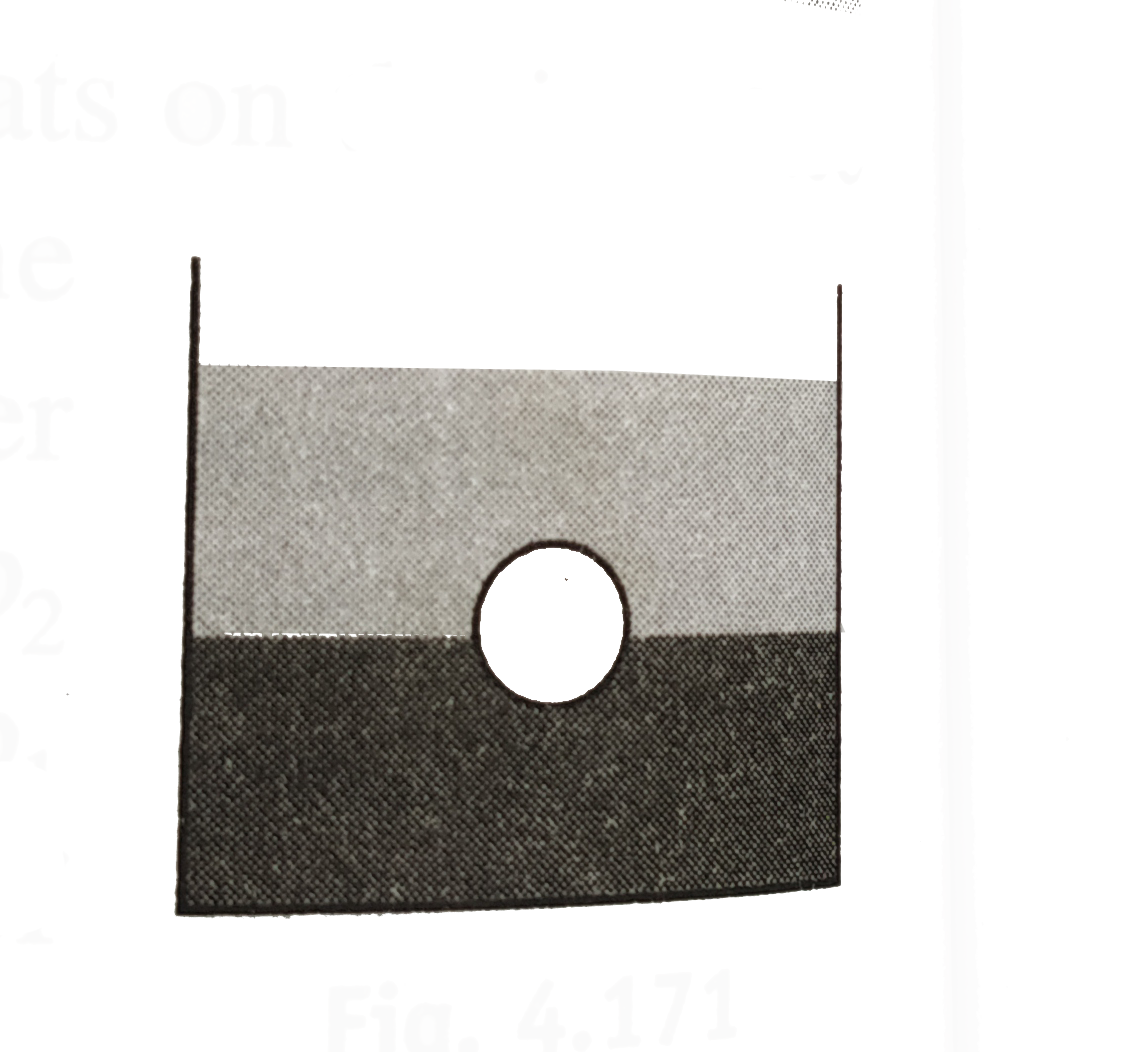10 mL of liquid carbon disulphide (specific gravity 2.63) is burnt in oxygen. Find the volume of the resulting gases measured at STP.
23.25 L
22.26 L
23.50 L
20.08 L
The correct Answer is:A
To solve the problem step by step, we will follow these calculations:
Step 1: Calculate the Density of Carbon Disulfide (CS2)
Given the specific gravity of carbon disulfide (CS2) is 2.63, we can find its density using the formula:
Density of CS2=Specific Gravity×Density of Water
Since the density of water is 1 g/mL:
Density of CS2=2.63×1 g/mL=2.63 g/mL
Step 2: Calculate the Mass of Carbon Disulfide
Using the density calculated above, we can find the mass of 10 mL of CS2:
Mass of CS2=Density×Volume=2.63 g/mL×10 mL=26.3 g
Step 3: Determine the Molar Mass of Carbon Disulfide
The molar mass of CS2 is given as:
Molar Mass of CS2=76 g/mol
Step 4: Calculate the Volume of Gases Produced at STP
From the combustion reaction of CS2 with oxygen, we can write the balanced equation:
CS2+3O2→CO2+2SO2
From the reaction, 1 mole of CS2 produces 1 mole of CO2 and 2 moles of SO2, totaling 3 moles of gas.
At STP, 1 mole of gas occupies 22.4 L. Therefore, the total volume of gases produced from 1 mole of CS2 is:
Volume of gases=3×22.4 L=67.2 L
Step 5: Calculate the Volume of Gases Produced from 26.3 g of CS2
Using the mass of CS2 we calculated:
Volume of gases from 76 g of CS2=67.2 L
To find the volume produced from 26.3 g of CS2:
Volume of gases from 1 g of CS2=67.2 L76 g≈0.8842 L/g
Now, for 26.3 g of CS2:
Volume of gases=0.8842 L/g×26.3 g≈23.25 L
Final Answer
The volume of the resulting gases measured at STP is approximately:
Volume=23.25 L
Given the specific gravity of carbon disulfide (CS2) is 2.63, we can find its density using the formula:
Density of CS2=Specific Gravity×Density of Water
Since the density of water is 1 g/mL:
Density of CS2=2.63×1 g/mL=2.63 g/mL
Using the density calculated above, we can find the mass of 10 mL of CS2:
Mass of CS2=Density×Volume=2.63 g/mL×10 mL=26.3 g
The molar mass of CS2 is given as:
Molar Mass of CS2=76 g/mol
From the combustion reaction of CS2 with oxygen, we can write the balanced equation:
CS2+3O2→CO2+2SO2
From the reaction, 1 mole of CS2 produces 1 mole of CO2 and 2 moles of SO2, totaling 3 moles of gas.
Volume of gases=3×22.4 L=67.2 L
Using the mass of CS2 we calculated:
Volume of gases from 76 g of CS2=67.2 L
To find the volume produced from 26.3 g of CS2:
Volume of gases from 1 g of CS2=67.2 L76 g≈0.8842 L/g
Now, for 26.3 g of CS2:
Volume of gases=0.8842 L/g×26.3 g≈23.25 L
The volume of the resulting gases measured at STP is approximately:
Volume=23.25 L
Similar Questions
Sixteen millilitre of a hydrocarbon gas was exploded with an excess of O2. On cooling ,t he volume of the resulting gaseous mixture was reduced by 48 ml. When KOH was added, there was a further decrease of 48 ml in volume. Find the molecular formula of the compound.
View SolutionCalcium phoshide formed by reacting calcium orthophosphate with Mg was hydrolysed by water. The phosphine evolved was burnt in air to yield P2O5. How many litres of air, containg 21% by volume of O2, was required to burn PH3 and how many grams of magnesium metaphosphate would be obtained if 204 g of Mg was was used for reducing calcium phosphide and the volumes of the gases were measured at STP?
View SolutionWhat volume of oxygen is required to burn completely a mixture of 22.4 L of methane and 11.2 L of hydrogen into carbon dioxide and steam? Equations of the reactions are given below. (Assume that all volumes are measured at STP.)
CH4+2O2→CO2+2H2O
2H2+O2→2H2O
View SolutionOne volume of a gaseous compound containing carbon, hydrogen, and oxygen was burnt in the presence of 2 volumes of oxygen. The resultant gases contained 2 volumes of carbon dixoide and 2 volumes of steam. Find the molecular formula of the compound, if all the volume were measured under the same conditions of temperature and pressure.
View Solution100cm3 of water gas is exploded with 100cm3 of oxygen' and the residual gases are cooled to room temperature. Find the volume composition of the resulting mixture.
View SolutionA solid uniform ball of volume V floats on the interface of two immiscible liquids [The specific gravity of the upper liquid is γ/2 and that of the lower liquid is 2γ, where γ is th especific gracity of the solid ball.] The fraction of the volume of the ball that will be in upper liquid is
View SolutionA solid uniform ball of volume V floats on the interface of two immiscible liquids (see the figure). The specific gravity of the upper liquid is ρ1 and that of lower one is ρ2 and the specific gravity of ball is ρ(ρ1>ρ>ρ2) The fraction of the volume the ball in the u of upper liquid is

View SolutionA solid uniform ball of volume V floats on the interface of two immiscible liquids (see the figure). The specific gravity of the upper liquid is ρ1 and that of lower one is ρ2 and the specific gravity of ball is ρ(ρ1>ρ>ρ2) The fraction of the volume the ball in the upper liquid is

View SolutionA solution of acid having 62% by mass of acid has specific gravity of 1.8 g. If the solution is to be diluted to attain a specific gravity of 1.2 then what volume of water should be added to 100 ml of this solution?
View SolutionThe normility of a solution that results from mixing 4g of NaOH,500mL of 1MHCl, and 10.0mL of H2O4 (specific gravity 1.149% H2SO4 by weight) is
The total volume of solution was made to 1L with water)
View Solution
